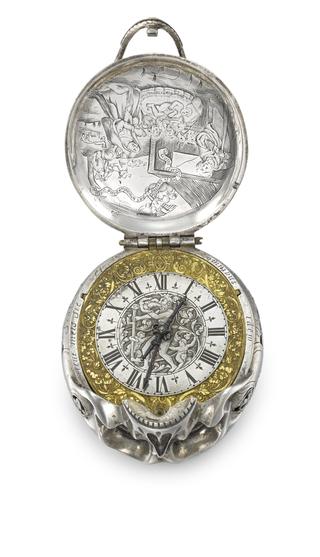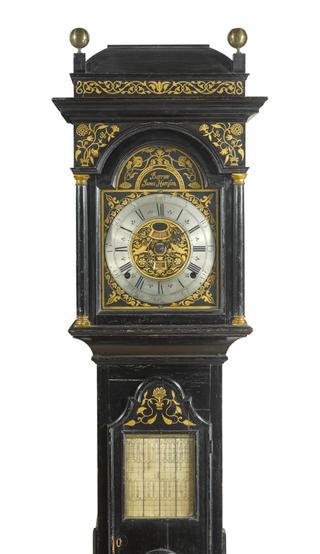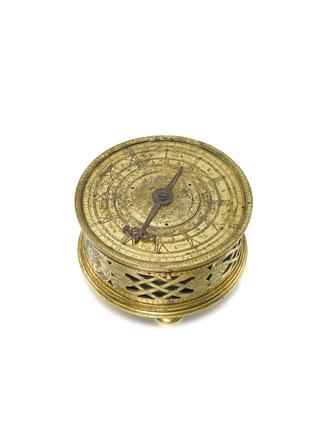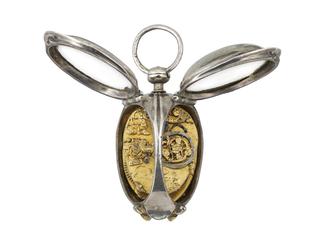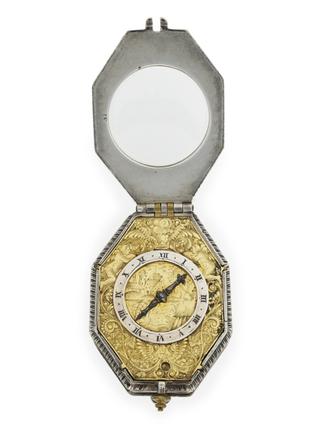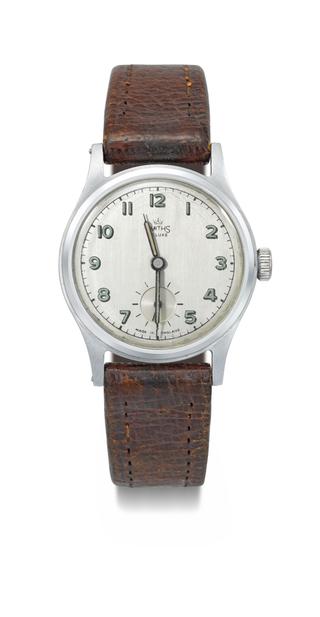



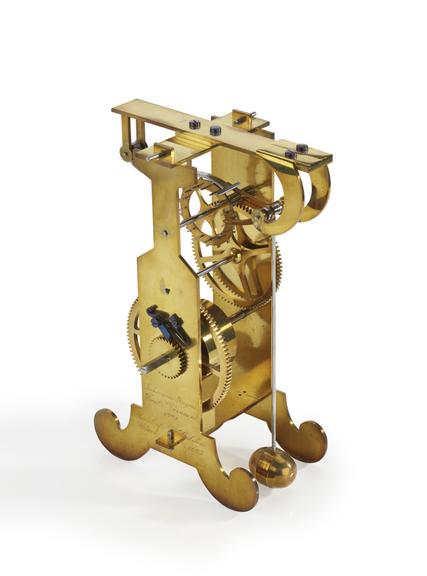
Brass model of Galileo's pendulum escapement clock by Inkerman Rogers, London, 1921. Clockmakers' Museum No. 629
Galileo was reputed to have grasped the timekeeping properties of the pendulum in 1583, while watching a chandelier in Pisa Cathedral swinging in the wind. Although this popular story is most likely apocrythal, by the end of the 1580's Galileo had begun to explore pendulum motion. This clock is based on a 1659 drawing made by his pupil and biographer Vincenzo Viviani (1622-1703), which itself is based on Galileo's ideas for a clock; a half-completed version of which was made after Galileo's death in 1649 by his son Vincenzio. Galileo's method of adapting a pendulum so that it both controlled a clock and was kept swinging by the clock was extremely ingenious. It was however flawed, as the clock interfered substantially with the pendulum’s natural swing.
Details
- Category:
- Clockmakers
- Collection:
- The Worshipful Company of Clockmakers
- Object Number:
- L2016-2296
- Materials:
- brass (copper, zinc alloy) and steel (metal)
- Measurements:
-
overall: 210 mm x 140 mm x 90 mm,
- type:
- spring clock
- credit:
- Lent by the Worshipful Company of Clockmakers
